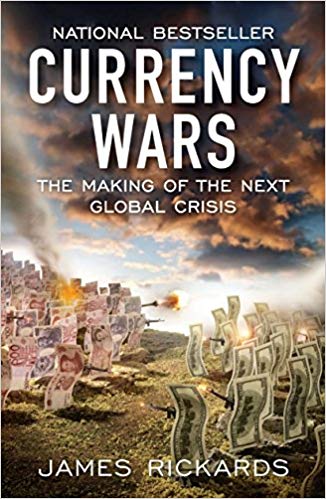Currency Wars Summary

3 min read ⌚
The Making of the Next Global Crisis
The world is consistently in the midst of “Currency Wars.” Take a look at the three wars that we have gone through.
About James Rickards

James Rickards is the senior manager of the New York City-based merchant bank – Tangent Capital Partners and is an advisor of government agencies on global finance.
“Currency Wars Summary”
Currency conflicts occur on an assortment of fronts, yet they, for the most part, they start inside a domestic economy.
A country is enduring high joblessness, low development and decreased demand can choose to devaluate its currency to support its exports and drive demand.
Yet, in an undeniably interconnected global economy, such moves would wind up harming that nation’s trading partners and welcoming countering like “tariffs, embargoes and other barriers to free trade.”
By no doubt, currency wars can turn ugly.
Nowadays, the US faces various threats from “rival nations and transnational actors such as jihadists,” which include biological, chemical and Internet-based attack systems, as well as financial weapons.
The risk of fiscal assaults provoked the Pentagon to build up a war game to mimic a global financial war and to investigate how such battle could undermine the US.
The players included Wall Street experts, international strategy specialists, Department of Defense staff members and military personnel.
The gathering met in late 2009 of in a secluded research center close Washington, DC, to plot the primary financial war game in US history.
The members partitioned into contending groups and scripted locale-specific objectives and political moves.
Utilizing notes and blueprints, players scrimmaged over gold, currency and cash supply.
They created different scenarios.
This game yielded a pivotal disclosure: Even in case of an effective assault on the dollar, the US claims enough gold to survive a financial war.
Key Lessons from “Currency Wars”
1. Currency War I (1921-1936)
2. Currency War II (1967-1987)
3. Currency War III (2010 –)
Currency War I (1921-1936)
Toward the end of World War I, combatant countries in Europe confronted enormous debts.
World countries soon looked for a return to the gold standard they relinquished amid the war.
Strategy makers concurred that the US dollar would keep up a settled value relationship to gold, and that nation could hold the American currency as an intermediary for gold reserves.
This did not take care of the issues: Cycles of currency devaluations went from nation to nation.
Currency War II (1967-1987)
The second global currency war began in 1967 as the US government budget wavered under the twofold weight of the Great Society antipoverty program, a domestic social agenda, and the Vietnam War.
Inflation took off, and the estimation of the dollar started to slide relative to gold.
Currency War III (2010 –)
The 2007 worldwide fiscal crisis started the cutting edge period’s third currency war, which began in 2010 and nobody knows where and how it will come to an end.
Apparently, this war’s stakes are substantially higher since the geographic outcomes go past particular trade issues to the core of the global fiscal framework.
Like this summary? We’d Like to invite you to download our free 12 min app, for more amazing summaries and audiobooks.
“Currency Wars” Quotes
Today we are engaged in a new currency war, and another crisis of confidence in the dollar is on its way. Share on X The fact that a currency collapse has not happened in a generation just implies that the next crash is overdue. Share on X When the dollar collapses, the dollar-denominated markets will collapse, too. Panic will quickly spread throughout the world. Share on X If the dollar falls, America’s national security falls with it. Share on X Gold is not a commodity. Gold is not an investment. Gold is money par excellence. Share on X








